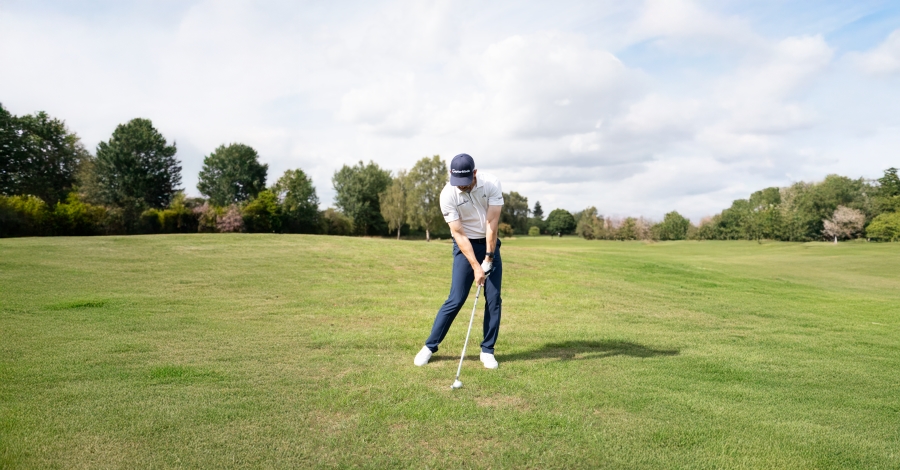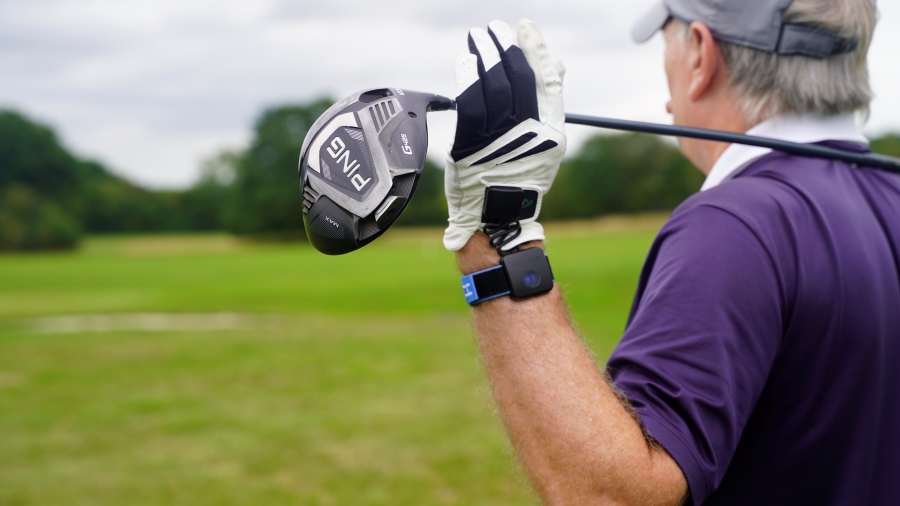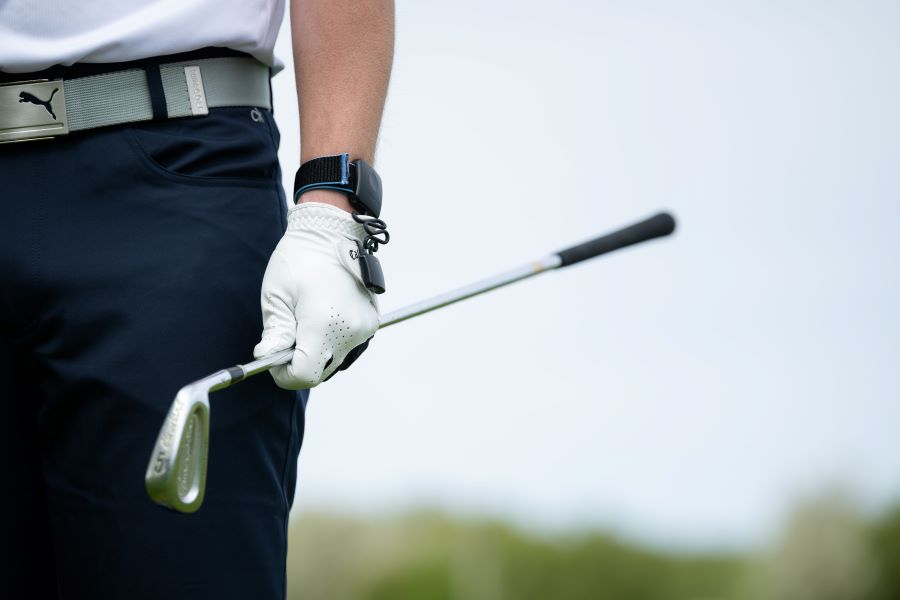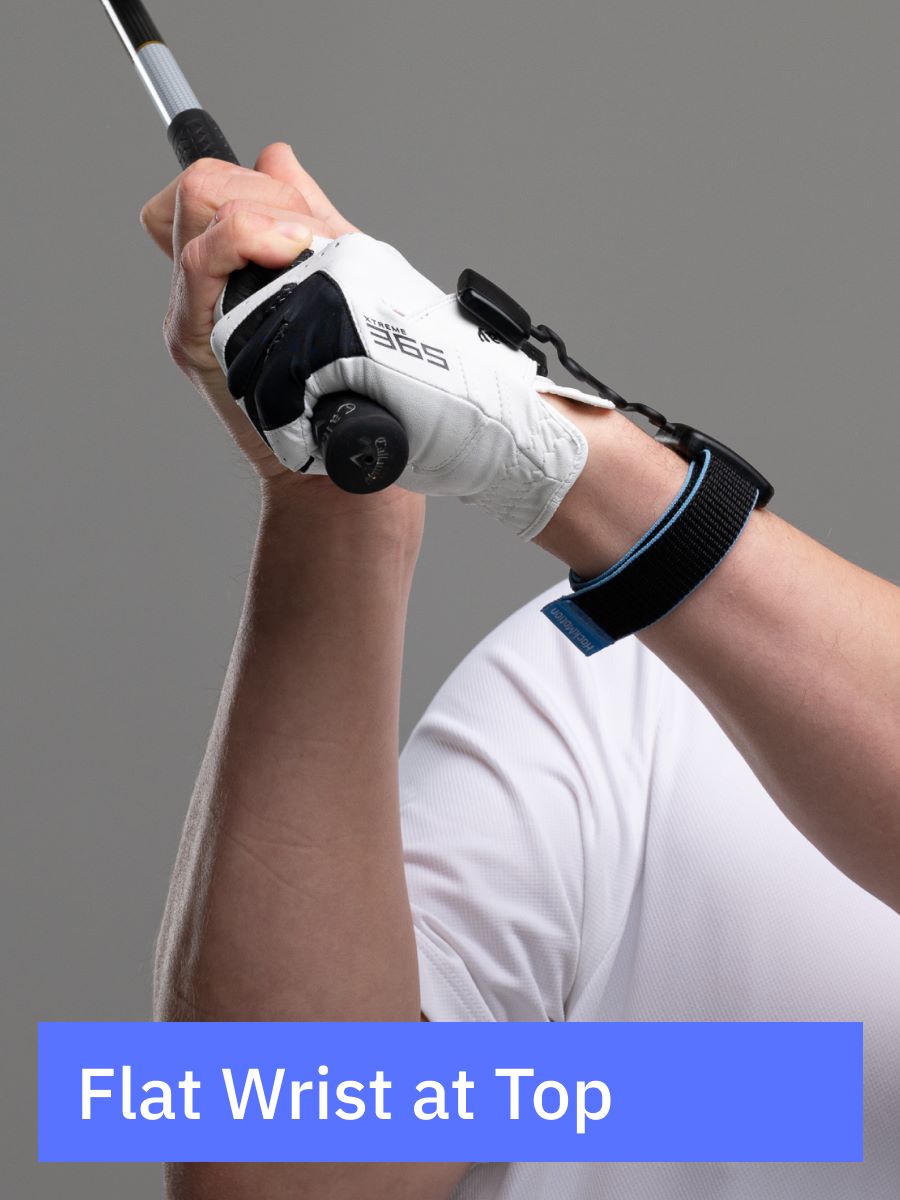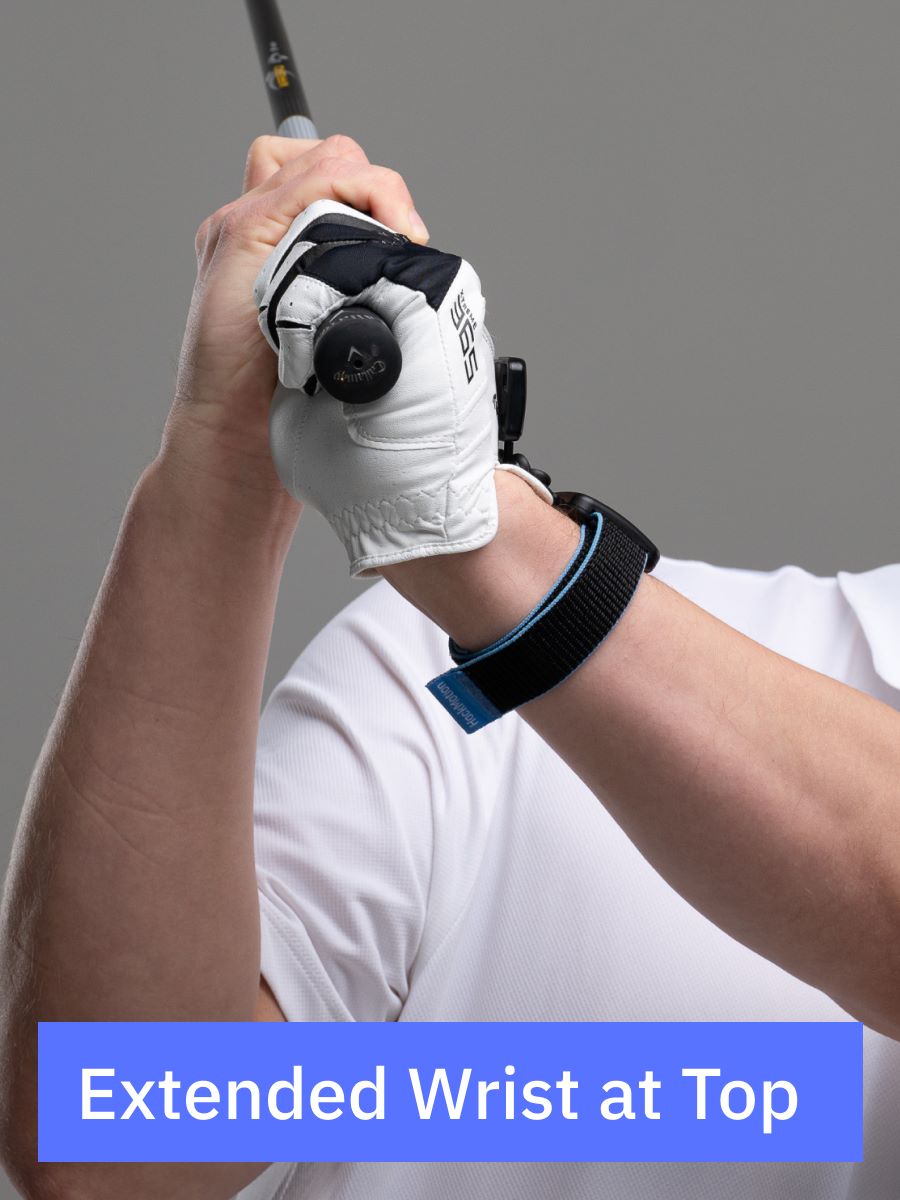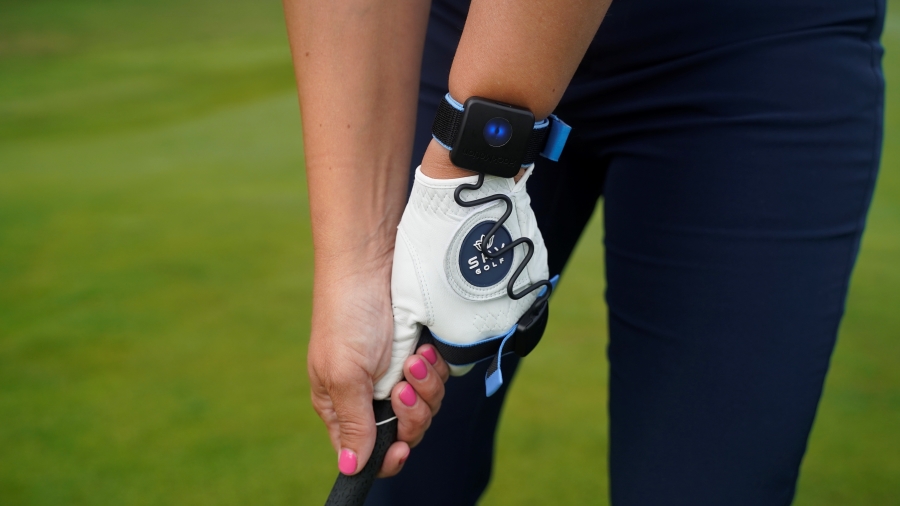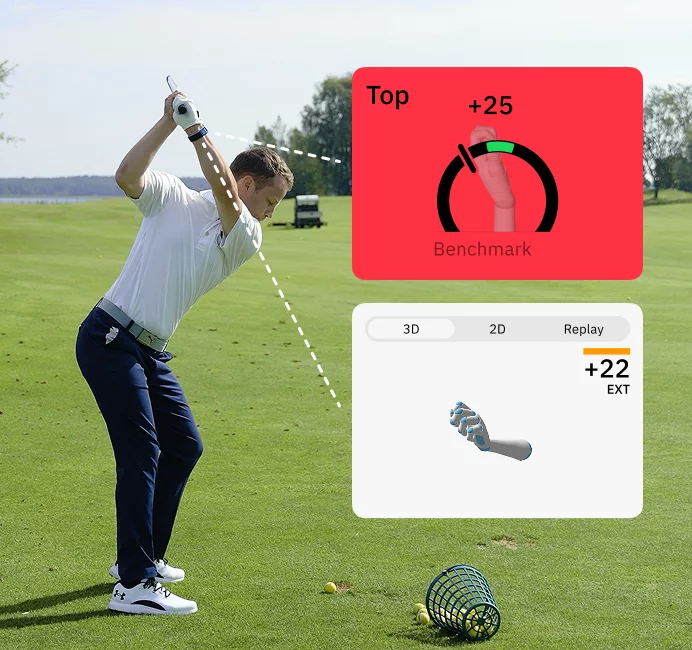How Proper Wrist Mechanics Unlock More Power and Distance
We often discuss how the wrists control the clubface. If you hit a straight shot, a fade, or a draw, it’s because of the angle of your clubface.
However, the wrists also play other roles in the golf swing, namely power and speed.
Yes, if your wrist action is correct, you will gain more power and speed.
We will walk through the role of the wrists in creating some power and how you can work on this in your own game.
Key Takeaways
If you don’t have time to read our entire article on the role of wrists in generating power and speed in the golf swing, here are the most important points to take with you:
- Hinging, proper releasing, and precise wrist angles of the lead wrist can all help you add power to your golf swing.
- In addition to position, golfers need to pay attention to the timing of their wrist action to see success.
- One key way to add more power and generate speed is to properly hinge and unhinge your wrists; you must delay the hinge just a bit and time the release of that hinge perfectly on the downswing.
- Wearing your HackMotion will help you with both the position and timing of your wrists throughout your golf swing; the ability to add 10 or more yards is very realistic when your wrists start working properly.
Contents
How do Wrists Generate Power and Speed in the Golf Swing?
There are four ways in which you can use your wrists to gain more speed.
These include leveraging wrist hinge, maintaining wrist lag in the downswing, proper wrist release, and utilizing proper flexion and extension to gain power and consistency.
Leveraging Wrist Hinge
The wrist hinge helps to create a powerful lever system with your arms and the golf club. All great players have a wrist hinge in their swing, but it typically happens after the takeaways, not right at the start of the swing.
During the backswing, when you hinge your wrists correctly, you can store energy in those wrists.
That stored energy is then released when the wrists unhinge on the downswing. The unhinging is where you get speed and distance.
Maintaining Lag
During the downswing, the lag in your wrists is the angle between the club shaft and the forearm.
Lag in the golf swing is incredibly important as it helps ensure a powerful strike without you having to do more work. One of our favorite ways to practice this additional lag in the downswing is the Pump Drill.
You’ll initiate the downswing with your hips and torso, keeping the wrists cocked until your hands are closer to the ball.
Proper Release of the Wrists
Now that you have some potential energy stored in your wrists from the proper wrist hinge and maintaining that lag you can start to learn to release the club for more power and speed.
The proper release of the wrists means unhinging your wrists so that you can square the clubface.
This release also increases speed in the clubhead, which gives you extra yards.
The key to proper wrist release is to think about your forearms. Focus on a natural unhinging of the wrists while your forearms rotate.
The key here is to avoid rolling the wrists and keep it more of a rotation of the forearms.
Flexion and Extension of the Lead Wrist
Flexion (bowing) and extension (cupping) in the lead wrist are tricky to feel but critical for both power and accuracy.
With HackMotion, you can measure these angles and train them until they become second nature.
The basic sequence looks like this:
- Takeaway: A little extension often happens naturally as the wrists hinge.
- Top of backswing: Lead wrist should be flat or slightly flexed, keeping the face square.
- Downswing through impact: Maintain that flat or slightly flexed lead wrist to deliver a square, powerful strike.
The main benefit of striking with a square or slightly flexed lead wrist is confidence—you can fire your lower body through the ball knowing the clubface will stay square.
This is why golfers like Dustin Johnson and Collin Morikawa create so much clubhead speed and distance.
These changes are subtle, so it’s best to practice with HackMotion for instant feedback. It’s like having a coach on your wrist every swing.
Common Mistakes Golfers Make with Wrist Action that Cost Them Power
Now that you understand what it takes to generate power from your wrist action in golf, golfers make a few mistakes.
- Early Release – releasing the club too early makes you lose your lag and clubhead speed before you even get to the golf ball.
- Excessive Wrist Hinge on Takeaway – when you hinge the wrists too soon, it adds extension and creates a steeper plane than needed, so expect much less consistency with excessive wrist hinges.
- Flipping Wrists at Impact – flipping the wrists is a last ditch effort to square the clubface at impact; the problem with wrist flipping is it’s not powerful, and it is difficult to repeat.
- Too Much Extension in the Lead Wrist – having the lead wrist too extended at the top of the backswing typically leads to a clubface that is wide open at impact; get the lead wrist to move to more of a flexed position.
Drills and Tips to Improve Wrist Action for More Power
If you know your wrists are costing you power, the quickest fix is targeted practice. The drills below focus on the key wrist positions, takeaway stability, transition flexion, shaft lean at impact, and maintaining lag.
Each one can be tracked with HackMotion, so you’re not guessing whether you’ve got it right; you’ll see and feel the progress in real time.
Inside Takeaway Drill
Rolling the club too far inside early sets up poor sequencing and an open face. This drill trains a more neutral takeaway while you track wrist angles at P2 with HackMotion.
HackMotion Inside Takeaway Drill
If your takeaway tends to get too far inside early, this drill is for you.
HackMotion Inside Takeaway Drill – Step by Step:
- Set up: Calibrate HackMotion; address the ball.
- Takeaway: Keep the clubhead outside your hands for the first 12–18 inches.
- Checkpoint (P2): Pause when the shaft is parallel; lead wrist should stay stable, not over-extended.
- Guide (optional): Use an alignment stick along your toes to prevent rolling inside.
- Blend it: Progress from slow reps into full swings, checking consistency with HackMotion.
HackMotion Motorcycle Drill
Flexing the lead wrist in transition helps square the face and add speed without flipping.
The “rev the throttle” feel gives you instant feedback with HackMotion.
Motorcycle Drill – Master Wrist Flexion in the Downswing
Focus on continuously adding flexion until the club reaches parallel, then smoothly complete your swing.
HackMotion Motorcycle Drill – Step by Step:
- Top of swing: Note lead wrist position (flat or slightly flexed).
- Transition: Add lead-wrist flexion as the first move down.
- Hold through P6: Keep flexion until the club is parallel in the downswing.
- Check feedback: Use HackMotion audio/vibration to confirm you’re in range.
- Reps: Start slow, then move into half and full swings.
Hit Hard, Stop Quick Drill
This drill improves compression, shaft lean, and face control by forcing a strong release and an abrupt stop after impact. If you can stop the club quickly, you’re controlling the strike.
Hit Hard, Stop Quick Drill – Step by Step:
- Set up: Favor lead-side pressure at address.
- Swing: Make a full backswing, hit hard, then stop the club immediately after impact.
- Arms straight: Keep arms extended through the brake—avoid a wraparound finish.
- Progression: Begin with “hit medium, stop quick,” then move to full speed.
- HackMotion check: Look for maintained lead-wrist flexion at impact.
Anti-Casting Wrist Angles Drill
Casting means losing your wrist angles too early, leading to weak contact. This HackMotion drill helps you hold lag longer and deliver forward shaft lean.
Anti-Casting Wrist Angles Drill – Step by Step:
- Set up: Calibrate HackMotion and swing to the top.
- Top checkpoint: Lead wrist flat/flexed, trail wrist extended.
- Start down: Keep the angle between lead arm and shaft as long as possible.
- Punch shots: Hit small shots brushing turf after balls.
- Feedback: Use HackMotion to confirm you’re not releasing early.
Conclusion
Now, you should have all the information and drills you need to add more power and speed to your golf swing with the help of your wrists. After analyzing more than 1,000,000 golf swings with HackMotion, we know that the wrists not only control the clubface but also add a lot of power to your golf game.
If you are struggling with that missing link and loss of power, spend some time working on your wrist action.






